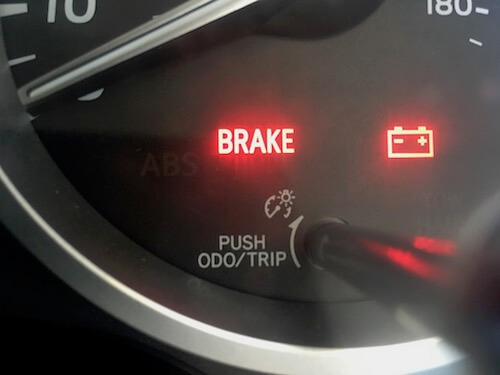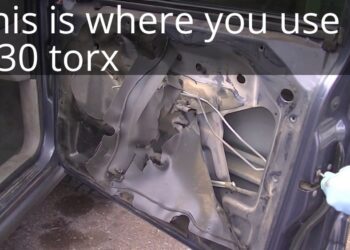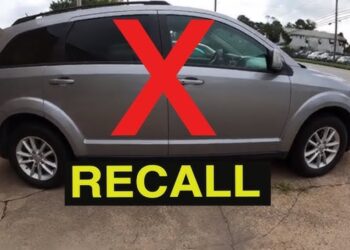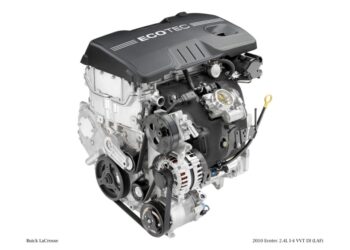Seeing the brake and battery light on your dashboard can be alarming. These lights indicate potential issues with your car’s system.
Understanding the meaning behind these warning lights is crucial. The brake light usually signals a problem with the braking system, such as low brake fluid or worn brake pads. The battery light, on the other hand, suggests an issue with the charging system.
Ignoring these lights can lead to serious problems, including brake failure or a dead battery. In this post, we’ll explore the common causes for these warning lights, what they mean, and what steps you can take to address them. Stay informed to keep your vehicle running smoothly and safely.
Common Causes
When the brake and battery light on your dashboard illuminates, it can be alarming. Understanding the common causes can help you diagnose the issue faster. Let’s explore some of the most frequent reasons behind these warnings.
Low Battery Voltage
A common cause for the battery light is low battery voltage. A car battery provides the necessary power to start your vehicle. Over time, batteries lose their charge, especially if they are old.
Symptoms of low battery voltage include:
- Dim headlights
- Slow engine crank
- Electrical issues
Using a voltmeter, you can check the battery’s voltage. A healthy battery should read around 12.6 volts when the engine is off.
Faulty Alternator
The alternator is crucial for recharging the battery and powering electrical components. A faulty alternator can cause the battery light to come on.
Signs of a failing alternator:
- Battery warning light
- Dim or flickering lights
- Electrical accessory failures
If you notice these symptoms, it’s essential to get your alternator checked. Ignoring it can lead to a dead battery.
Damaged Brake Pads
The brake light often indicates an issue with the brake system. Damaged brake pads are a common cause.
| Symptom | Description |
|---|---|
| Squeaking noise | When applying brakes |
| Longer stopping distance | Car takes longer to stop |
| Vibration | Felt in the pedal |
Regularly check your brake pads and replace them if they are worn out. Proper maintenance can prevent serious issues.
Immediate Actions
When your brake and battery lights turn on, taking immediate action is crucial. Ignoring these warnings can lead to more significant issues. Addressing them promptly ensures your safety and the health of your vehicle. Follow these steps to troubleshoot and resolve the problem.
Check Battery Connections
First, check the battery connections. Loose or corroded connections can trigger the battery light. Open the hood and locate the battery. Inspect the terminals for corrosion, which appears as a white, ashy substance.
Use a battery terminal cleaner to remove any corrosion. Ensure the connections are tight. A loose connection can prevent the battery from charging properly. If the connections are secure and clean, proceed to the next step.
Inspect Brake Fluid Level
Next, inspect the brake fluid level. Low brake fluid can cause the brake light to illuminate. Locate the brake fluid reservoir, usually found near the back of the engine bay. The reservoir is typically a small, translucent container with a fill line.
Check the fluid level against the fill line. If it’s low, add the appropriate brake fluid type. Be cautious not to overfill. Low brake fluid can indicate a leak or worn brake pads, so consider having the system checked by a professional.
Test Alternator Output
Finally, test the alternator output. A failing alternator can cause the battery light to stay on. Use a multimeter to test the alternator’s voltage output. With the engine running, place the multimeter leads on the battery terminals. The reading should be between 13.8 and 14.2 volts.
If the reading is below this range, the alternator may be failing. Consider having it inspected and replaced if necessary. A faulty alternator can drain the battery, causing further issues.
Safety Precautions
Driving with your brake and battery lights on can be dangerous. These warnings indicate potential issues that need immediate attention. Ensuring your safety and the safety of others is crucial. Here are some important safety precautions you should follow.
Avoid Long Drives
Avoid long drives when your brake and battery lights are on. Long trips can strain the car’s systems further. It is best to stick to short, essential trips until the issue is resolved.
Use Hazard Lights
Use your hazard lights to alert other drivers. This will indicate that your vehicle is experiencing issues. Keeping other drivers informed helps prevent accidents.
Limit Electrical Usage
Limit electrical usage in the car to conserve battery power. Turn off unnecessary components like the air conditioning, radio, and charging ports. This can help prolong battery life until you reach a safe location.

Credit: aplusjapaneseautorepair.com
Diagnostic Tools
Dealing with brake and battery light issues can be stressful. Knowing the right diagnostic tools can simplify the process. These tools help identify problems quickly and accurately. Let’s explore some essential tools to diagnose brake and battery light issues.
Obd-ii Scanner
An OBD-II scanner is essential for modern vehicles. It reads error codes from the car’s computer system. This scanner helps pinpoint the exact issue. It can save time and money on repairs. Plug the scanner into the vehicle’s OBD-II port. Read the error codes displayed. Follow the scanner’s instructions for a detailed analysis.
Multimeter
A multimeter measures electrical values like voltage, current, and resistance. It’s handy for checking the battery’s health. Connect the multimeter to the battery terminals. Check if the voltage reading matches the recommended range. A low reading indicates a weak or faulty battery. You can also test the alternator. This ensures it’s charging the battery correctly.
Brake Fluid Tester
A brake fluid tester checks the moisture content in the brake fluid. Moisture reduces the effectiveness of the brake fluid. Insert the tester’s probe into the brake fluid reservoir. The tester will indicate if the fluid needs replacement. Regular testing ensures optimal brake performance. This tool is simple yet effective.
Professional Assistance
Experiencing brake and battery light issues? Seek professional assistance to diagnose and repair the problem quickly. Ensure your vehicle’s safety and performance on the road.
When the brake and battery light comes on, it can be alarming. The issue may be minor, but it might also be serious. Seeking professional help ensures your car remains safe and reliable. Knowing when and what to expect can save time and money.When To Call A Mechanic
Call a mechanic if both lights stay on for more than a few minutes. Strange noises or smells also signal the need for help. If your car struggles to start, don’t wait. Professional advice prevents bigger problems.What To Expect From A Checkup
A mechanic will inspect your car’s battery and braking system. They will check for any leaks or worn-out parts. The diagnostic process includes a thorough examination. This ensures all potential issues are identified. Mechanics use specialized tools to test your battery and brakes.Cost Estimations
The cost depends on the problem’s severity. A simple checkup may cost around $50 to $100. Repairs or parts replacement can increase this amount. Battery replacements range from $70 to $200. Brake repairs might cost between $100 and $300. Always request a detailed quote before proceeding with repairs. “`Preventative Measures
Understanding the importance of preventative measures can save you time and money. Regular upkeep ensures your car runs smoothly. Avoid unexpected issues with these simple steps.
Regular Battery Maintenance
Regular battery maintenance is crucial. Check your battery terminals for corrosion. Clean them if needed. Ensure the battery is secured in place.
Follow these steps:
- Inspect battery terminals monthly
- Clean terminals with a mixture of baking soda and water
- Use a brush to remove any dirt
- Check for any leaks or damage
Routine Brake Inspections
Routine brake inspections ensure your brakes function properly. Check the brake fluid level. Inspect brake pads and rotors for wear.
Important checks:
- Look for any leaks in the brake fluid
- Check the thickness of brake pads
- Inspect the rotors for any signs of damage
Schedule an inspection every six months. This helps catch issues early.
Alternator Checkups
Alternator checkups are vital for your vehicle’s electrical system. The alternator keeps the battery charged. It powers the electrical system when the engine runs.
Tips for checking your alternator:
- Listen for unusual noises
- Check the voltage output with a multimeter
- Inspect the alternator belt for wear and tear
If you notice dimming lights or a dead battery, have the alternator checked. Regular checkups prevent more significant issues.
Understanding Warning Indicators
Car warning lights can be confusing. They often appear suddenly and can cause concern. Understanding what these lights mean can help you stay safe. Two important indicators are the brake and battery lights. Both can signal issues that need attention. Below, we explain what these warning lights mean.
Battery Light Meaning
The battery light signals a problem with your car’s electrical system. It might mean the battery is not charging properly. A failing alternator or wiring issues could be the cause. If this light comes on, your car may not start soon. It’s best to check the battery and related parts immediately.
Brake Light Meaning
The brake light indicates an issue with the braking system. This could be low brake fluid or worn-out brake pads. Driving with brake problems is dangerous. If the brake light appears, inspect the brakes as soon as possible. Your safety could depend on it.
Combined Warning Signs
Sometimes, both the battery and brake lights come on together. This could signal a more serious problem. It may indicate a failing alternator affecting both systems. Your vehicle might lose power and braking efficiency. Don’t ignore these combined warnings. Immediate professional help is advisable.
Credit: www.nissanversaforums.com
Long-term Solutions
Addressing the brake and battery light issues for the long term is crucial for vehicle safety. This section explores sustainable solutions for enhancing your car’s performance. Regular maintenance can prevent future problems and ensure a smoother ride.
Upgrading Battery
Investing in a high-quality battery can solve many electrical problems. Modern batteries offer longer lifespans and better performance. Consider upgrading to a maintenance-free battery. It reduces the need for frequent checks and replacements.
Here is a comparison of different battery types:
| Battery Type | Lifespan | Maintenance |
|---|---|---|
| Lead-Acid | 3-5 years | High |
| AGM | 5-7 years | Low |
| Lithium-Ion | 10 years | Very Low |
Replacing Brake Components
Worn-out brake components can trigger the brake light. Replacing these parts ensures optimal braking performance. Focus on brake pads, rotors, and fluid. Each plays a vital role in the braking system.
- Brake Pads: Change them every 50,000 miles.
- Rotors: Inspect them for wear and replace if needed.
- Brake Fluid: Flush and replace every two years.
Investing In Quality Parts
Using genuine parts can prevent frequent repairs. They fit better and last longer. Quality parts ensure that all systems work efficiently. They also offer better warranties and support.
Benefits of investing in quality parts:
- Enhanced safety
- Longer lifespan
- Better performance
In summary, addressing brake and battery light issues with long-term solutions can save money and time. Upgrade your battery, replace brake components, and invest in quality parts. Enjoy a safer and more reliable ride.

Credit: www.youtube.com
Frequently Asked Questions
Why Are My Brake And Battery Lights On?
Both lights indicate a possible issue with the brake system or the battery. Check immediately.
Can I Drive With Both Lights On?
Driving with these lights on is risky. It may indicate a serious problem. Get it checked.
What Does The Brake Warning Light Mean?
The brake light usually signals low brake fluid or a problem with the brake system. Inspect promptly.
Why Is My Battery Light Illuminated?
A lit battery light often means the battery isn’t charging properly. It could be an alternator issue.
How To Fix Brake And Battery Light Issues?
First, check brake fluid and battery connections. If unresolved, seek professional help. Don’t ignore these warnings.
Conclusion
Addressing brake and battery lights is crucial for car safety. Ignoring them can lead to bigger problems. Always check these warning lights promptly. Regular maintenance can prevent many issues. Stay safe on the road by being proactive. Consult a professional if unsure.
Keep your vehicle in top condition. Your safety is worth it.

















